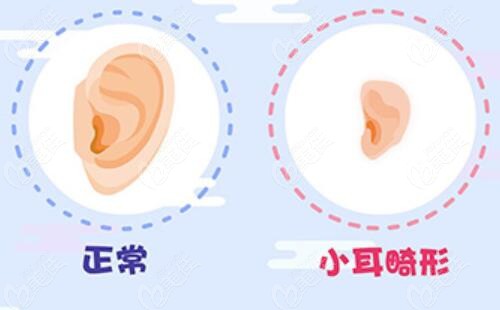The microtia in children is common now, but the key is to treat it as soon as possible. However, there are many methods for external ear reconstruction in medicine, and the main commonly used operations are medpor stent/autologous cartilage directly embedded stent/autologous cartilage directly embedded stent/expansion all inclusive method. They don't know which ear reconstruction method is better?

Having seen the differences, advantages and disadvantages of three common external ear reconstruction operations, we know which one is better!
1、 Ear reconstruction with medpor stent
As the name implies, the contour of the outer ear can be made through surgery and implanted into the Medpor disposable ear reconstruction stent.
Advantages: The operation time is short, the cost is relatively low, and the psychological impact on children is large. The operation is highly similar to normal ears, and the psychological impact on children is large.
Disadvantages: skin grafting is required. Skin grafts can be removed from the scalp, stomach and chest. After skin grafting, there will be some differences between the skin and the surrounding skin, leaving scars!

2、 Ear reconstruction by direct embedding of autogenous costal cartilage
Two stages are required for ear reconstruction by directly burying costal cartilage:
The first stage is ear burying: the costal cartilage taken from itself is carved into ear shaped scaffolds, and then transplanted into the skin behind the ear;
The second stage is ear erection: it is generally carried out after half a year. The operation will be buried in the head surface of the ears separately erect. By transplanting cartilage, then the epithelium is transplanted to the surface of the posterior auricular fascia!
Advantages: the operation cycle is shorter, the normal life is basically not affected, the complications are less, the method is simple, and the ear is more realistic and natural.
Disadvantages: skin graft is needed behind the ear, which will cause skin color difference and scar.
3、 Enlarged total package ear reconstruction
Total ear reconstruction can be said to be recognized as ear reconstruction, but the operation can be divided into three stages:
The first stage is to inject physiological saline three times a week from 7 days after the 80ml operation of the posterior burying of the residual ear, in order to open the skin of the residual ear;
The second stage is to take out the dilator, cut out the autogenous rib cartilage, and carve the ear bracket according to the size of the healthy side ear for auricle reconstruction;
In the third stage, the reconstructed ear can be further repaired 6-12 months after operation.
Advantages: small wound and scar.
Disadvantages: The skin expansion cycle is long, and the operation age is 8 years old or later. It is not suitable for patients with tight skin behind the ear.

Conclusion: Through the detailed analysis of the above three common ear reconstruction methods, it is found that each ear reconstruction method has its own advantages and disadvantages. Parents need to consider which method to choose. If you want to short cycle, choose the biomaterial molding method. If you want to leave smaller scars, it is better to choose the expanded full ear reconstruction. The good domestic full ear reconstruction doctor belongs to Guo Shuzhong in Xi'an, International Medical Center, however, * you can choose according to your actual situation!








